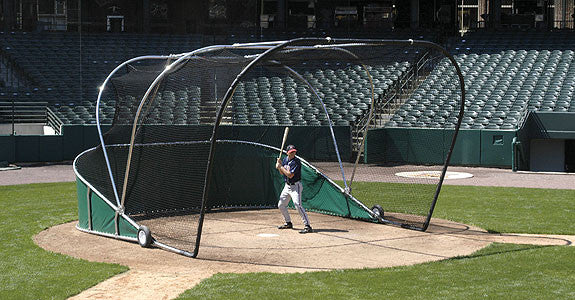I would like to add a little something to the question I had yesterday: do you think it's valuable to have outside instruction at facilities, personal instructors, coaching our individual level. The answer that question in my opinion and my opinion is is my opinion after were 50 years in the game. The answer is both yes and no. It's yes if the player really wants to go it's yes if the players really willing to listen it's yes only if the player is willing to do the work outside of instruction. There's no magic formula a player that can hit the ball cannot go to an instructor or to a camp or to the facility one or two times then all of a sudden get the ability to hit the ball. What all that instruction does is allow him to get the knowledge so that he can work on it correctly outside. There is a reason players are better when they get the time from their parents, brothers sisters, friends all those things that cause them to do the skill over and over.
Don't get me wrong if it's enjoyable and the kid wants to do it is an activity then perfect if work for you and the player then do it and enjoy it. But it won't make any difference if all you do is go once a week and never do anything outside of it. Nothing is accomplished one day a week has to be done consistently and often.
The saying is true we have to enjoy the journey because the destination is hard to get to and a long ways off.
Coach Arnald Swift

We have this come up on a regular basis especially the seasons quit and teams have players leave and need to add to players or trying to establish a new team regardless if it's for a local league or travel ball. There are huge areas and questions to be answered but I would like to address one from the standpoint that I am the assessor and trying to establish what players have the ability, understanding, knowledge and be a player that I want to have on my team.
First and foremost during tryouts we want everybody to do the same thing catch the same flyball of a machine preferably so it's always the same, throw the ball from the same spot, normally from shortstop on a easy rolled ball by the coach so there's no fielding really involved just getting it picked up so I can see his arm and his accuracy. Then again using the machine have the ball hit to the player again at shortstop is normal seeing how he fields the ball-- hit the ball off of tea and time in contact to touching first base with a stopwatch to assess speed- and finally using a machine so easy strikes so that you can see the bat swing, mechanics of the swing, and how hard he hits it.
Now I realize I've used the word machine a lot of times and the reason we do that is because everything will be consistent but if you don't have a machine make sure you use the same person trying to replicate the same throw, , by the way I always thought don't use the bat you can't be consistent there, so that every player has an equal opportunity.
Then hear something that I look at that normally people don't give enough credit for I want to see how the kid reacts when he fails when he succeeds I'd like to know his attitude and reactions when he throws one over the first baseman's head or drops the flyball. Does he pout kicked the ground and carry-on orders and get back and say let's do it again by his actions not his words by his actions not his words. Then if you have a chance make sure your recruiting parents as well as players. these two are very difficult because they're not quantifiable they just have to be how you feel about the situation and what your instincts tell you but there worthwhile making notes of as well as the mathematical/numerical values you have on a players skills-- running--hitting--Fielding-throwing- catching.
It will be worth your time to be able to have these numbers and facts when you tell a kid yes you're on the team or worse when you have to tell a kid/parents that no were going to pass and not use you this year.
Good luck and doing one of the toughest things around getting a team with players that you can coach and get good performance out of while making it a worthwhile experience for everybody.
Coach Arnald Swift BATCO
How to recruit yourself to college, methods, ideas, suggestions
Hi Coach,
Coaching up here in Northern California, Little League (10-12 year olds, Majors). The one thing I have the biggest problem with is kids pulling their heads as they swing and not keeping their eyes on the ball. I've tried a lot of home remedies, but nothing works consistently. Any hints?
Thanks,
Don:
=================================================
You are correct this is a problem and you're correct until he can once to stay in and look at the ball while he swings it will not happen.
The first and foremost thing is that they have to get in the right sequence: have to step and get their foot on the ground, rotate their hips,then bring the bat through the strike zone hands first.
The best drill that I've found for this is a version of the soft toss drill. Get a screen (probably a pitcher L-screen) and have the batter stand at the plate (preferably in a cage) and soft toss directly at him both underhand and overhand just like your throwing pitches over the plate, using a screen to protect yourself. This will allow him to concentrate on the three steps and not worry about how hard he's going to hit it or if he's going to get it and he can keep his head down and see the ball all the way and even trying to see it come off the bat.
Hope this helps and if we can help you more with getting DVDs or conversation please just let me know.
Coach Arnald Swift
thoughts on breaking pitches, when should players start opinions, age breaking pitches are appropriate, general thoughts on age and breaking pitches
Parents, as your boy or girl gets better and progresses into the sport of baseball and/or softball they're going to be faced with tryouts. Where a coach or set of coaches trying to determine if he or she can play on their team regardless of whether it's elite travel or just regular league many times were faced with the try out. If the tryouts are well-run you should be able to see comparisons between your player and the other players and how they can hit, run, throw, field, and at times how well they understand the game through situations.
All tryouts try to create measurable's so that they can validate their choices both to themselves and the parents. Many times parents don't see, in fact most always, their child/player in the same light as the coaches that are doing the evaluation. By measurable's we mean something that the player can do that we can physically and mathematically major.
Typically these are: running speed how fast over the distance from home plate to second base, arm speed how fast does he throw the ball from the pitcher's mound and from the shortstop position to first base -- this is measured with radar almost always. On the batting aspects New technology is allowing for a measurable on the bat speed, bat angle, exit speed of the ball off the bat all these things are done using a machine or a batting T so that little or no difference between one boy/girl to the other.. Something we always try to avoid is the human element in a tryout,
you should note as a parent or try out administrator that there needs to be opinion place for somebody that knows the game and knows athletes to be able to comment on athletic ability, quickness, correctness of throwing motion, correctness of hitting technique,, awareness of the situations when placed into the field or at the bat and a situation is simulated.
But that human element does enter into when we determine if the player has a good attitude, hustle, pays attention, will be a good team player and that the parents and the player understood what they're trying out for and most the time with the costs going to be both in time and in money.
All these are things that you as a parent and as a coach trying out need to consider, this article is a long ways from inclusive but I would hope it gives you some thoughts of what you're going to be faced with or what you have to do in tryouts.
Coach Arnald Swift
Baseball tip Some Coaches Notes On Baserunning
I wish I knew why so little time is spent on baserunning in practice.
Maybe there’s just so much to do coaches are less comfortable with their knowledge, and as I said, I don’t know.
But what if it were true that you could actually steal a few extra victories in a season? Would you feel it was important enough to rethink it? I hope, yes. But where would you start...and how would you implement it?
Some quick thoughts:
Decide how much time you would dedicate, then DO IT. Now they can get better, quicker and it becomes a habit for the entire team.,Explain to the team about a new weapon they will be using: baserunning! Let players know that all players can help, not just Johnny Fast-Guy. Be prepared for your 2nd practice drills to go 20-30% better than the 1st! Be prepared to get excited (as will your players) as this happens.
Make it a part of your practice routine. You’ll even come up with more ideas that I PROMISE you’ll “get” as your interest peaks!.
Thoughts on each base:
2nd Base
Second base is called scoring position for a reason.
It takes one hit to score most runners from here...and has the added bonus of eliminating the force or double play and pressures the defense and your opposing coaches further.
3rd Base
There are 9 different ways to score from 3rd base! Can you name them?
Wow! You just have to attack this base and get yourself there. It puts so much pressure on opposing coaches, pitchers, catchers and infielders that you could steal an extra game or three over the course of a season!
Jeannie
thank you for the question would be happy to come in on as I've been faced with this very problem with my two boys and, so the kids that I've coached over the 40 years. This is going to be my coaches/dad answer.
There is no doubt in my mind you play for the team that is not highly ranked in your description. It has zero value for player development, player enjoyment, player advancement to sit on the bench. If you're not playing you're getting behind in a 10% playing time, top team really is nothing is nothing but late inning appearances, games that don't mean anything, games that are already lost or one that he would be getting in.
The only value playing with the team is the social interaction, and the prestige with that similar very thin when you're not getting to do anything to contribute. The one thing I can't see is how good he is and why he's only a 10% player, if there's a reason that he can overcome to become one of the 90% players and that's what he needs to do but he's going to do it by playing6 not sitting on the bench.
Then finally let me say one thing is a coach and a the may sound a little harsh this is 13-year-old baseball there no scholarships, there's no real glory outside of what you give it to yourself, there's going to be at least five more years of trying to become a player. When it really counts is in the high school, or the 17 and up summer teams. But he'll never make those sitting on the bench. He needs to be playing. Now if a boy or girl is a player and they are playing and they should be moving up within their age brackets play the top competition that's available. But they have to be able to play and succeed.
Let me ask you a question when I was coaching basketball in a very small high school I was the JV coach. We had a senior that was not very good in fact he was going to get cut as a player but he was a super kid is a person so we gave him the choice, a rare choice of high school, that as a senior he could play on the JV team and play not to set. He chose to be the 13th man 12 man squad at the high school level instead of to play at the JV level. So in reality he didn't play at all and all the games that season he probably got on the floor maybe a total of five minutes. So my question is was he right or wrong. To me that's the same question you're asking here is better to sit or better to play. It's always better to play in my mind and in my advice.
Coach Arnald Swift
34 years of teaching, 40+ years of umpiring, 40 years of coaching at all levels from youth to D1, coached almost every sport there is one point of the other.
I would like to say a few words about young players or even older players concentrating on the single sport to early in life. This is going on because my grandson all of a sudden is decided he didn't want to play basketball this year that he only want to play baseball. I was in particularly in favor but he is 10 years old and he's going to change his mind more than once that's a guarantee. What's happened on a practical level is that there is no baseball for him to concentrate on so the only thing he's doing is going to the cage once in a while it hitting with that's not really practice. But more importantly I think it's a matter he's not getting the life experiences that he would enjoy playing all the games with all his friends. I encourage parents to really get their kids to try many different things. Sports aren't any different than food, entertainment, academic interests, arts and science, all that kind of thing. I don't think there's a parent out there that doesn't hate when their kid just sits in front of the TV or in front of the videogame. But I really don't see that much difference between those two activities only doing one sport during the developmental years.
I'll even add a second story of a young man I know in California that only play baseball up until the time you said during his freshman class, 2016, at that point he decided he didn't like being left out social circle so he was going to play football. As it turned out he was relatively good enjoyed it and says he's going to do it again, now he's playing freshman basketball again doing very well, and then in the spring he will play baseball. The real point of this is that he tried to stay with baseball only up until the time he was 14 years old all of a sudden he decided that he would like to try these other things, you did and he's turned out to be good at it and enjoying all the benefits. Therefore I think the take away would be it's never too late to start doing other things.
If we as parents, grandparents think they were going to build an athlete it's going to get college scholarships, pro sports, or in any way have sports be part of his life from a financial side then were fooling ourselves. The mathematical odds of these things happening are extraordinarily high and then the truth is we spend more money trying to get this accomplished that we never spend on the scholarships if we didn't have the sports. Sports and competition are for enjoyment in the real benefit comes from playing the sport, being part of a group, and having your family be with you while you're doing it.
I wrote this both from first-hand experience with my boys, my grandkids, and what I believed as a coach for over 40 years. What are your thoughts?
Darryl to Coach Arnald Swift
I was holding the radar gun (Striker (sic) STALKER but I don’t know the model number) for my nephew. Being a physicist rather than knowing anything useful about baseball, I noticed it read to one decimal point from which I inferred it was measuring speed to the nearest 0.01 mile per hour and the rounding to the nearest 0.1 mile per hour. I asked him if he knew what the accuracy of the gun was and its precision and he didn’t so my 1st question is what is the accuracy and precision of your guns. My second question is how close to parallel to the balls flight path must the gun be pointed before it begins to reads wrong due to the misalignment and does anyone ever worry about that? I think he is very happy with the gun, I was just wondering about these things so thought I would ask.
==================================================
Darryl
I apologize for not getting back to you with my thoughts and comments on your letter, somewhere other this got send it to spam and I just discovered it today I had no means or way meant to slight you because the question is interesting. I taught math and computers and so I also think a little bit like yourself.
As far as the accuracy of the guns even the most accurate of guns don't actually read in the hundreds of a mile, it's common to see 10th of a mile but when we use the professional guns made by Staker (most popular among professionals) they read in miles per hour not hundredth or tenths from a radar gun on a baseball or any other sports ball.
A radar gun reads in a direct line best so when doing baseball to set up behind the pitcher or behind the catcher in a straight line to get the absolute most accurate reading. Then also remember that the radar field measures about 30 feet away from the location where the ball started or stopped. It's interesting to note that the speed of the ball out of the hand at 30 feet is faster than the ball at the catcher 30 feet away into his glove. Simple physics in a way the ball is actually slowing down on its way to the plate and perception but it is a little bit slower as it reaches the plate. For baseball people the most accurate is at the plate because that's where the batter has to hit it.
Now the angle of reading the flight of the ball is ideally 0 to 10° but you can get relatively accurate readings up to about 20° of variance the good guns have the ability to do some math internally and get an accurate reading from off a direct line. And one other factor that you did mention is how far away there are some smaller versions, cheaper versions, that need to be within about 20 to 30 feet to have any accuracy at all then the professional type guns are accurate through screens, batting cages, that kind of material from up to 300 feet. I've always found it interesting that the manufacturers of police radars, have the same exact radar guns available to the sporting industry. They just change the recording devices to meet the needs.
Hope this helps in your thoughts and your curiosity and I certainly appreciate your interest and sorry about the time lapse.
Coach Arnald Swift BATCO
 Stalker Radar Gun Sport 2
Stalker Radar Gun Sport 2











 Stalker Radar Gun Sport 2
Stalker Radar Gun Sport 2